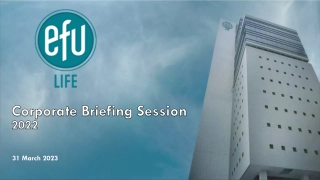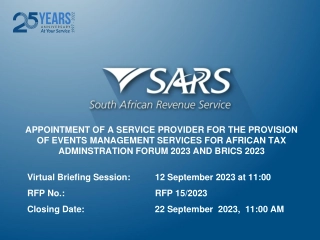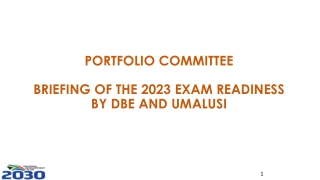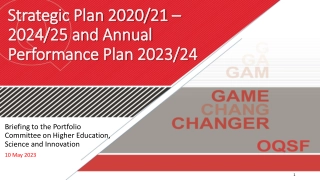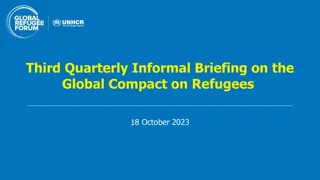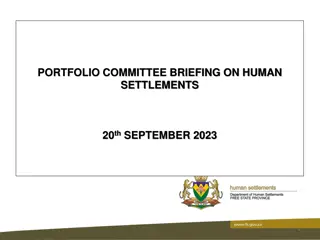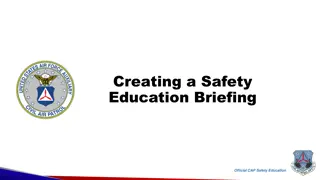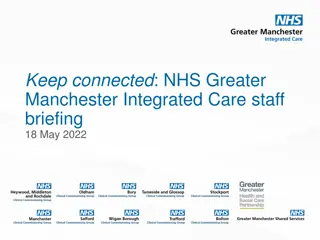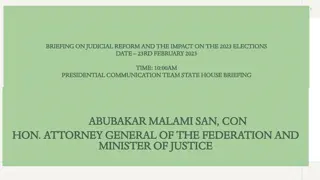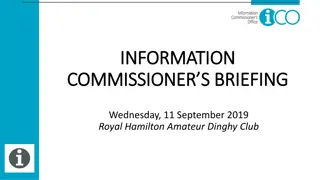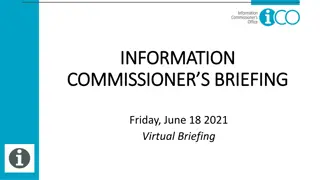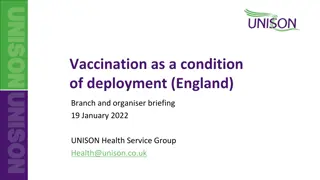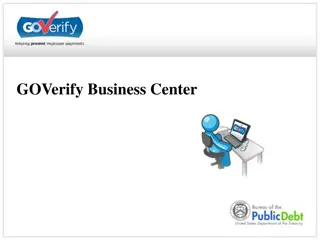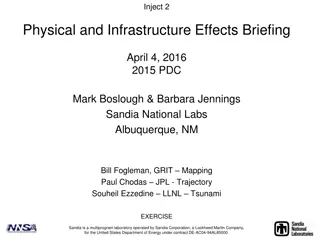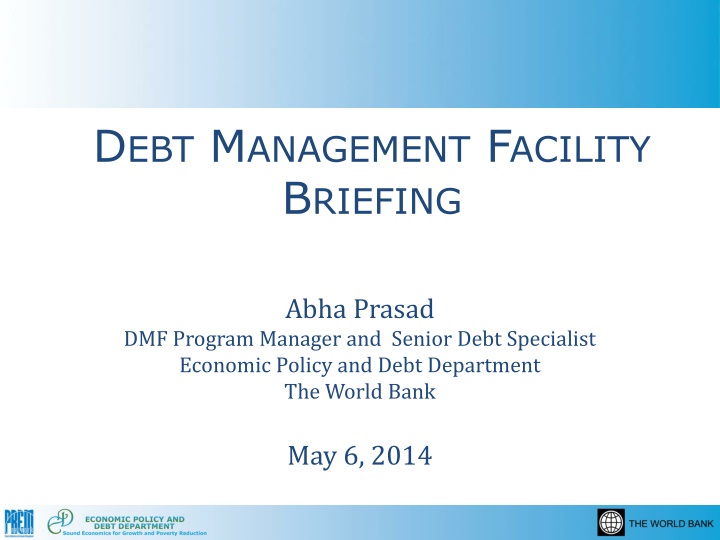
Debt Management Facility Briefing - Implementation & Expansion Overview
Explore the Debt Management Facility (DMF) program implementation and expansion, including activities, governance, findings, and partnerships with the IMF. Learn about capacity building, stakeholder engagement, and initiatives for debt relief and sustainability.
Download Presentation

Please find below an Image/Link to download the presentation.
The content on the website is provided AS IS for your information and personal use only. It may not be sold, licensed, or shared on other websites without obtaining consent from the author. If you encounter any issues during the download, it is possible that the publisher has removed the file from their server.
You are allowed to download the files provided on this website for personal or commercial use, subject to the condition that they are used lawfully. All files are the property of their respective owners.
The content on the website is provided AS IS for your information and personal use only. It may not be sold, licensed, or shared on other websites without obtaining consent from the author.
E N D
Presentation Transcript
DEBT MANAGEMENT FACILITY BRIEFING Abha Prasad DMF Program Manager and Senior Debt Specialist Economic Policy and Debt Department The World Bank May 6, 2014
Contents DMF I 5-years of implementation DMF II -Multi-donor Trust Fund Expanded Activities Coverage Country coverage Governance arrangements Contributions and commitments Findings from TA activities and how that shapes DMF II work program
DMF 1: Program Implementation (1) Activity wise Move towards formulation of debt management strategy Increase in capacity building trainings * up to April 2014
Program Implementation (2) Capacity Building -Trainings Training by Type Training by Region
Program Implementation (3): Diversity (DeMPA, Reform Plan and MTDS)
Program Implementation (4) (Planned vs Actuals: inception to April 2014) DMF Program implementation January 2009-June 2014 Planned till June 2014 Actual till April 2014 Total missions 183 134 of which DeMPA missions 82 54 of which MTDS missions 66 45 of which Reform Plan missions 35 35 Training events 32 42 DMPP 24 24 DMN 8 8 Stakeholders Forum 5 4 (+1)* * Fifth in April 2014
DMF II- Multi-donor Trust Fund Launched DMF II launched on April 4, 2015 in partnership with IMF Builds on basic principles of DMF I Programmatic approach Sustained engagement Promote collaboration among wide range of institutions and partners Builds on strong partnership with IMF to leverage institutional expertise to deliver capacity building in debt policy and management Working together on debt relief and debt sustainability initiatives, and technical assistance on medium-term debt management strategy (MTDS) formulations
Expanded Coverage of Activities Current DMF Activities to be continued DeMPA Debt Management Reform Plans * MTDS * Debt Managers Network and Peer Learning Activities New Activities DSF- capacity building* Subnational debt management* Advice on Domestic Debt Market Development* Debt Portfolio Risk Management Debt Managers Practitioners Program International Capital Market Operation advice on issuances Debt Managers Network Peer Learning Activities Knowledge generation and dissemination* *Activities will be carried out jointly for both the Bank and IMF, and Implementing Partners.
Country Coverage Similar to DMF I All IDA-eligible countries, LICs and those that have graduated but were part of the initial program IMF s Poverty Reduction and Growth Trust countries a sub-set of LICs
Governance Arrangements Steering Committee Donor representation - one representative of each donor (contributions of USD 1 million over a 2-year period) Co-chairs WB and IMF Endorses work program, Reviews reports Secretariat Manages day-to-day operations Coordinates with donors, IMF and implementing partners Complies annual report (and log-frame report) Panel of experts Advising and quality review Implementing Coordination Group Coordinates partner activities
Contributions and Commitments Existing donors spearheading financing efforts Austria EU Germany Netherlands Norway Switzerland Administration Agreements finalized with 3 donors and funds transferred to DMF II. Potential commitments and interest from the Asian Development Bank, the EU, France, Russia and Sweden Support down the pike likely from the African Development Bank, Belgium, and Canada Exploring interest from Australia, Denmark, the European Investment Bank, Korea, and Luxembourg
What have the DeMPA results shown us? Legal framework 60 Debt Reporting Managerial Structure 55 50 45 Debt Records Debt Management Strategy 40 35 30 25 Segregation of Duties, Staff Capacity and BCP Evaluation of Debt Management Operations 20 15 10 5 0 Debt Administration and Data Security Audit Cash Flow Forecasting and Cash Balance Management Coordination with Fiscal Policy Loan Guarantees, On lending Derivatives Coordination with Monetary Policy Domestic Borrowing External Borrowing Meet with the requirements of Score C or Higher Scores Not meet with minimum requirements Note: The chart is based on the results of 62 sovereign DeMPA reports
What have the MTDSs shown us: Average values of risk indicators 25.0 ATM external Weighted average interest rate external 20.0 10.0 15.0 Min-Max Min-Max 8.0 10.0 Average 6.0 Average 4.0 5.0 2.0 0.0 0.0 LIC LMIC UMIC LIC LMIC UMIC FX debt (% of total) 100.0 90.0 80.0 70.0 Min-Max 60.0 50.0 40.0 30.0 20.0 10.0 0.0 LIC LMIC UMIC Source: WB Internal Study
Progress Made: Early Outcomes DeMPA Indicator Steps taken Country Burundi, Malawi, Sierra Leone, Togo, Mongolia, Sao Tome Principe, Sierra Leone Strengthened legal framework Legal framework Enhanced institutional framework governing loan guarantees Upgraded or modernized organizational structure Malawi, Senegal, Sierra Leone Burundi, The Gambia, Ghana, Kenya, Maldives, Malawi, Tanzania, Senegal Bangladesh, Papua New Guinea, The Gambia, Liberia, Malawi, Nicaragua, Sierra Leone. Moldova Bangladesh,B urkina Faso, Ethiopia, Maldives, Cape Verde, The Gambia, Ghana, Kenya, Malawi, Mali, Moldova, Mozambique, Nigeria, Nicaragua, Rwanda, Tanzania Malawi, Mongolia Managerial structure Strengthened middle office Debt management strategy development based on cost-risk analysis, strengthen debt management analysis Strengthened audit function Deepening domestic market development Debt Management Strategy Audit Domestic Borrowing Cash Flow Forecasting & Cash Balance Management Segregation of Duties, Staff Capacity & BCP Debt Records and Debt Reporting Bangladesh, Kenya Strengthened cash management Burkina Faso, Malawi, Maldives Reduced operational risk Bangladesh, Bhutan, Maldives, Rwanda, Togo Bhutan, Burundi, Liberia, Burkina Faso, Malawi, Mali, Mozambique, Nigeria, Togo Improved debt recording and reporting
Conclusions Programmatic approach continues to bear fruit Greater number of reform plan mission than past, results from upstream assessment and analytical work increasingly taking root and triggering institutional reforms and capacity building Reform momentum most sustained when strong links between upstream and downstream implementation activities and is consistent within the broader PFM reforms Importance of maintaining integrity and quality of upstream work through independent assessments, peer review, and quality control process DMF continues to strengthen coordinating mechanism among providers of providers of TA, development partners and donors
Thank You For more information: http://www.worldbank.org/debt 16

